Hand embroidery or sewing is a thing of the past. But that doesn’t mean that you can no longer enjoy quirky, embroidered designs, right? Because technology has already made it possible to apply intricate stitching to fabric with minimal sewing skills.
With a quality embroidery machine just like with the right sewing machines, you can personalize your decor, clothes, and accessories using whatever design you choose. But before you start stitching your dream designs, you’ll need to find an embroidery machine that suits your needs.
Well, we’ve rounded up the best embroidery machines on the market today to help reduce the time and guesswork you’ll have to do. If you’re ready to pick, check out our list below.
Top 8 Embroidery Machines Of 2020 Reviewed
1. Singer 7258
 Best Embroidery Machine For Clothes
Best Embroidery Machine For Clothes
To be honest, the Singer 7258 is really a sewing machine. One of the best in the market, actually. It can be used by both beginner sewers and intermediate ones. It has a lot of automatic features that make it convenient to use such as automatic stitch length, width, and tension plus an automatic needle threader (who doesn’t like that one, right?). This machine comes with 100 stitches, 76 of which are decorative. So, why is this on our list? Because it comes with a darning and embroidery foot that allows you to do free-motion embroidery.
What that means is that you can create your own design and use the machine to make it come alive by finding the balance between the speed of your needle and the movement of your fabric. The beauty of free-motion machine embroidery is that you are in control; it’s all about experimenting and having fun. If you’re a beginner who wants to learn sewing and embroidery at the same time, this is the perfect way to become adept at both. And the Singer 7258 can definitely help with that.
However, the machine isn’t without faults. Its built-in light is dim so any experimenting you want to be done should be under a brighter light. It doesn’t come with an automatic thread cutter which is inconvenient but not a deal-breaker. And the throat width is pretty small (only 5 inches wide) so you may be limited to the size of your embroidery design.
Pros:
- Allows you to practice free-motion embroidery
- Automatic needle threader
- Easy to use
Cons:
- No automatic thread cutter
- Dim light
- Narrow throat width
2. Brother SE400
 Best Embroidery Machine For Beginners
Best Embroidery Machine For Beginners
The Brother SE400 is our number one pick because it will give you the most bang for your buck. This is a combination sewing and embroidery machine which means that you’ll be able to have one machine to do all your quirky crafting on – sewing, quilting, and embroidery. This machine features a backlit touch screen LCD display, 67 unique sewing stitches, 70 built-in embroidery designs, and 5 lettering fonts. If that’s not enough design for you, you can buy embroidery designs from iBroidery.com or other sites and upload them to your machine via a USB cable.
The SE400 also comes with 1 hoop (4″ x 4″), a buttonhole foot, an overcasting foot, a monogramming foot, a zipper foot, a blind stitch foot, a button fitting foot, and an embroidery foot. Even better, the machine comes with built-in tutorials that you can easily access through the LCD touchscreen. So, what’s the problem? Well, scrolling through 12 pages of stitches can get irritating over time. In addition, some owners have reported breaking their needles when using this machine. Also, the maximum embroidery design size is 4″ x 4″ so you’ll have to do a bit of maneuvering and/or split any designs that are larger than that.
Pros:
- Combination sewing and embroidery machine
- Built-in tutorials
- USB connectivity
Cons:
- Small embroidery design size
- May break your needles from time to time
- Requires you to scroll through 12 pages of stitches
3. EverSewn Hero – 400 Stitch
The EverSewn Hero is a combination sewing and embroidery machine that is best for intermediate stitchers. It features more than 400 stitches and 40 built-in embroidery designs. It can produce 650 stitches per minute. And the LCD interface is one of the best (read that: easiest) we’ve navigated. Another thing we loved about this machine is that it features a bobbin monitoring system, stopping when the thread breaks and alerting you when the thread is running low.
Like other computerized machines, the EverSewn Hero also has USB connectivity so you can add more designs. However, it was slightly annoying to learn that you’ll need to convert files you find online to the same format that is used by EverSewn. It’s not a dealbreaker but it’s an extra step that could have been done away with. Compared to other machines, the EverSewn Hero is only 26 pounds so you can easily transport it to and from your embroidery classes. Just take note that it is a bit on the long side. Also, for the price, we expected the machine to include an automatic thread cutter – a feature you normally see in lower-priced models. Unfortunately, it isn’t part of the package.
Pros:
- Bobbin monitoring system
- More than 400 stitches available
- Easy to use
Cons:
- No automatic thread cutter
- Requires you to convert files to the format EverSewn uses
4. Singer Quantum Stylist 9960
If you’re a tech-savvy sewer, the Singer Quantum Stylist 9960 may be more your style. Like the previous pick, this isn’t a combination sewing and embroidery machine. While it does have 5 built-in Alphanumeric Fonts, it doesn’t include any embroidery designs. What it does have is a darning and embroidery foot that you can utilize for some free-motion embroidery. What makes this particular sewing machine stand out is the fact that it is a high-end machine that will grow with you as you become more adept at sewing, quilting, and embroidery.
It has a lot of easy-to-use features such as a built-in needle threader and electronic autopilot. It even has mirror imaging and stitches elongation to add to your creativity. With so many features and accessories (18 presser feet and 15 other accessories), it’s not any wonder that this machine costs a lot. And it’s also quite heavy; at 20 pounds, this isn’t something that you’d gladly lug around to embroidery classes in your community. You might have to stick with online ones.
Pros:
- Mirror image of stitches & stitch elongation
- Many accessories
- Intuitive design
Cons:
- Expensive
- Heavy (not portable)
5. Neala Sewing Machine Mini EL Embroidery Machine 2-Speed with Needle Protector
 Best Handheld Embroidery Machine
Best Handheld Embroidery Machine
Looking for the best embroidery machine to carry with you wherever you go? If so, then the Neala Sewing Machine is what you need. It is a small-sized, cute, sewing machine suitable for use at home, while traveling or in the outdoors. But that isn’t the reason it is considered the best handheld embroidery machine. It comes with a built-in thread cutter to automatically cut the thread. It has an LED lamp and is capable of expanding the field of vision even as it protects your eyes from possible injury.
To power this machine, you may need to plug it into mains electricity or rely on four AA batteries. So, it is perfect for use in the outdoors or off-grid. It is an adjustable 2-speed machine that gives you control when it comes to the pace at which you would like to produce your work. The shuttle core has an adjustable height and can easily change the needle size. It is perfect for thin sewing thin fabrics and for use by beginners. The makers of this embroidery machine believe so much in their work that they are offering a 180-day full-refund period.
Pros:
- A compact, portable embroidery machine
- May use mains power or four AA batteries
- Suitable for use by beginners
Cons:
- Some people complained about breaking thread
- Designed for light fabrics
- Not as intuitive as you would expect
6. Liheya Sewing Machine Electric Mini Embroidery Machine Portable Sewing Kit
 best Mini Embroidery and Sewing Machine
best Mini Embroidery and Sewing Machine
Whether you are a beginner or seasoned embroiderer, having a compact, lightweight machine is a must. That way, you can choose which room of your home you want to work from. In addition to easily carrying the machine wherever you are going, you will also find it extremely easy and convenient to store after use. You will get all that and more from the Liheya Sewing Machine. It is considered to be the best mini embroidery and sewing machine, given the adjustable 2 speeds that work perfectly for seasoned hands as well as beginners.
It comes with a built-in thread cutter to automatically cut the thread and allow you to continue with your embroidery work. With this machine, you may want to use four AA batteries or connect it to an electricity socket using the handy AC adapter. A versatile embroidery machine, this product is easy to control. All you need to do is to press a button or step on the foot pedal. Talk about a completely hands-free embroidery machine. The good thing is that you can use this machine to sew through four layers of denim.
Pros:
- Comes with 2 adjustable speeds
- A compact, portable embroidery machine
- Can be used on thick fabrics
Cons:
- May fail to work on soft fabrics
- Reports of the LED screed being almost invisible
- Tension settings may be problematic
7. Brother PE550D Embroidery Machine, White
 Best Embroidery Machine , white
Best Embroidery Machine , white
Manufactured by a reputable company, the Brother PE550D is a great embroidery machine that promises to deliver up to 125 built-in designs, including 45 designs from Disney. It is, therefore, perfect for beginners with little or no design experience. Additionally, it has a total of 9 fonts including 6 for English and 3 for Japanese lettering, perfect for branding projects.
If you have ready embroidery designs, you can import them using a USB device and hook it into the handy port. That means you can design and embroider virtually anything you want. The large color touchscreen makes it possible for you to preview designs before embarking on the embroidery process. It has a large 4 by 4 inches embroidery hoop, complete with built-in alignment tools and an embroidery foot. The needle gets threaded automatically with the touch of a lever. Whatever embroidery project you might have, this machine is infinitely capable of delivering it.
Pros:
- Comes with 1250 built-in designs
- Has a handy USB port for customized designs
- Has a needle that gets threaded automatically
Cons:
- Reports about the machine showing a constant error message
- It may take time to learn to use it
- Reports of problems with the bobbin thread
8. Brother SE600
The Brother SE600 is the slightly upgraded, more expensive version of the SE400. It has a larger touch screen which is colored, not black and white. It allows you to connect a USB stick directly instead of a cable. It doesn’t have an embroidery card slot. Naturally, it offers more built-in stitches and designs – 103 stitches, 80 embroidery designs, and 6 lettering fonts. The SE600 also comes with a convertible free arm so you can sew jeans, sleeves, and cuffs. However, it still does not allow you to make larger embroidery designs. Also, horizontal threading may not be easy.
Pros:
- An upgraded version of SE400
- Convertible free arm
- Colored LCD screen
Cons:
- Small embroidery design size
- Horizontal threading may be difficult
How to Choose the Best Embroidery Machine: the Ultimate Buying Guide
So you want to embroider. And we don’t mean doing it by hand just like your grandma did in the good old days. In today’s world, embroidery isn’t just for decorating pillows or monogramming your stuff. It can be used to on so many things, including embellish gift items, decorate your quilting projects, and enhance your clothes.
It can be used to create quirky accessories like handbags, pot holders, luggage tags, zipper pouches, and more. With an embroidery machine, it “seams” like the only limit is your imagination. Of course, that presupposes you already have a machine.
Whether you’re new to the world of embroidery or a regular Martha Stewart, you will need to make sure that whatever machine you buy suits your needs perfectly. An embroidery machine is an investment so buying one should never be taken lightly. After all, you’ll be spending at least $200 for a decent machine. What this means is that you should take the time to do your research. Which is exactly what our guide is for – to help you figure out just exactly what YOU need in an embroidery machine.
Types of Embroidery Machines
Before we get into the nitty-gritty details, let’s first differentiate the different types of embroidery machines that you’ll come across.
Single Needle Embroidery Machines
Just like what the name says, these machines only feature one needle on the head just like what you’d see with a regular sewing machine. Aside from a single needle, these machines also only have one point of attachment for the hoop and typically comes with a smaller range of hoop capabilities. On average, these machines can sew around 300 to 1000 stitches per minute.
The best thing about single-needle machines is that they’re easy to use whether you’re using it for general stitching or decorative stitching. You can also find them in most online and local sewing shops. Compared to other types of embroidery machines, these are more affordable with a decent machine costing between $200 to $300.
However, single needle machines take more time to finish complex designs that feature multiple colors. This is because you’ll need to manually change the thread each time you need to sew on a different color.
Multi-needle Embroidery Machines
Like the name suggests, this type of machine features several needles, typically 4 to 10 on the head. A multi-needle machine is perfect for complex or intricately patterned embroidery designs. Each needle will be able to hold a thread of one color, allowing you to complete a project without having to change colored threads along the way. Unlike single-needle machines, these come with 2 points of attachment for the hoop and has a larger range of embroidering capabilities. On average, this type of machine can create 400 to 1000 stitches per minute.
One benefit of using this type of machine is that projects are completed faster. Another is the fact that these are more precise than single needle machines. Plus, you can more easily hoop bags, accessories, and readymade clothes with this type of machine. You can even do free arm embroidery easily with a multi-needle machine.
However, multi-needle embroidery machines are very expensive – ranging from $2,000 to $10,000. In addition, there are lesser models available and you’ll be hard-pressed to find this type of machine in most stores.
Which Type is Best for You?
It actually depends on a number of factors which we will be discussing in more detail through a series of questions. However, one of the best ways to determine what type of embroidery machine works best for you is to try out an embroidery machine through an embroidery class or embroidery event.
Not only will you get firsthand experience on how the machine feels and works, you’ll be able to talk with other embroiderers regarding their experiences. In addition, you’ll get a better idea of what exactly you’re looking for. If you aren’t able to test a machine, we’ve listed down several questions that will help you figure out which machine will suit you best.
What is the Maximum Embroidery Design Size that the Machine Can Handle?
This is the most important question you need to ask because it will allow you to see the limitations of what you can create with the machine. Obviously, basic embroidery machines will have a smaller embroidery area compared to higher-end models.
Check what is the maximum hoop size of the machine. The sizes range from 100mm x 100mm to 360mm x 350mm. Small projects will only require small hoops. Larger projects will require larger hoops. The most common hoop sizes are 4” x 4”, 5” x 7”, 6” x 10”, and 8” x 12”. However, not all machines can accommodate all these sizes.
How Many Hoops do you Get With the Machine?
Speaking of hoops, an embroidery machine will typically include an embroidery hoop or several along with accessories. Some come with 2 extra hoops of different sizes. Check if the hoop size is something that you can use for your project. If not, check to see what additional hoops are available from the manufacturer and how much they cost.
What is the Throat Width?
The throat width of an embroidery machine is the distance between the needle and the body of the machine. The bigger the throat width, the more room you have for your project. A small throat width will limit the size of your embroidery design. It may also be frustrating to use because you’ll need to constantly maneuver the cloth in order to make it fit.
How Many Stitches Per minute can the Machine Do?
Stitches per minute are the speed of the embroidery machine. Obviously, the higher the number, the faster the machine can work which, in turn, means the quicker your project will get done. While the speed can range from 300 to 1,000 stitches per minute, only models with speeds at 650 stitches per minute and above.
How Many Designs and Fonts are Pre-programmed in the Machine?
All embroidery machines will have built-in designs and fonts that you can use. Most basic models will only have less than 50 built-in designs for you to choose from and very few fonts. Higher-end models can have as many as 100 or more designs installed as well as 10 to 12 fonts.
How do You add More Fonts and Designs?
While some people will prefer a large selection, other crafty stitchers would prefer the option to add more to what’s already there. If that’s you, you’ll need to find out how you can add more designs. Some models will allow you to transfer downloaded designs through a USB stick or cable while others will be able to connect directly to the internet. Make sure to choose the option that you’re most familiar with.
What’s the Digital Display Like?
The most important thing you need to consider regarding the digital display screen is if it’s easy to use/navigate. This is because this is where you’ll be scrolling and selecting designs. In some models like the Brother SE600, you can even edit designs through the digital display. You might want to look for a machine that has a relatively large screen so you can see more detail and edit more easily. Also, you might want to check if the machine will allow you to combine two designs on the screen. This is an important consideration if you plan on combining different designs in the fabric and wish to have the machine do them all in one pass. If your preferred embroidery machine lacks this function, you will need to buy embroidery software that will allow you to do this.
Can the Embroidery Machine Sew Too?
A lot of embroidery machines are actually a sewing machine and embroidery machine in one. While this is an important consideration, having a versatile machine is cheaper than owning one of each. Even if you already have a sewing machine for your other crafting projects, a “combo” machine like the Brother SE400 can be an alternative if your regular machine requires maintenance or repair.
What Accessories are Available for Your Machine?
While most embroidery machines are sold with accessories such as a needle set, cleaning brush, spool caps, and bobbins, it’s still important to know what else is available. Think of your project and what attachments you’ll need such as presser feet. You may want to be able to do some quilting so check if you can add a quilting table to your machine. Knowing what options are available can help you check the machine’s future versatility and ability to grow with you as you get to advance your skills. With the case of the Singer 7258, this is a sewing machine that comes with an accessory that allows you to embroider designs using the machine – the darning/embroidery foot.
Does the Seller/Dealer have an Onsite Repair Center?
Dealers typically have knowledgeable sales staff AND full-time trained technicians who can clean or service your machine whenever necessary. For this reason, most experts recommend buying from a reputable dealer. Buying directly from the manufacturer means shipping it off to them every time you require a repair which can be very costly and can take quite a bit of time.
Are There Classes Offered With the Machine?
A lot of dealers offer embroidery classes that will teach or refresh your memory on the basic functions of the machine. Some will even offer regular technique classes that you can take to grow your skills. This is a great way to learn the different embroidery capabilities of your machine.
Remember, a lot of research is required if you want to buy an embroidery machine. You don’t want to end up with one machine and wish you’d chosen another. Time well-spent in learning the ins and outs of an embroidery machine will result in money well-spent.


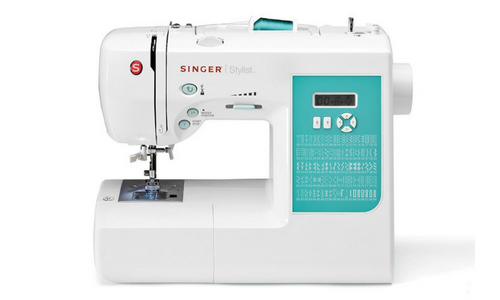
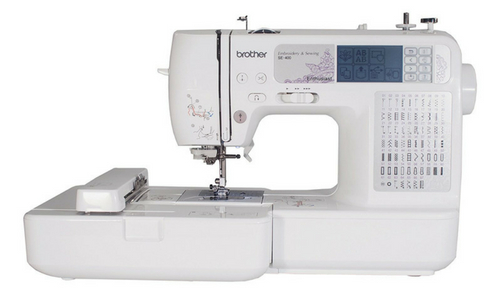
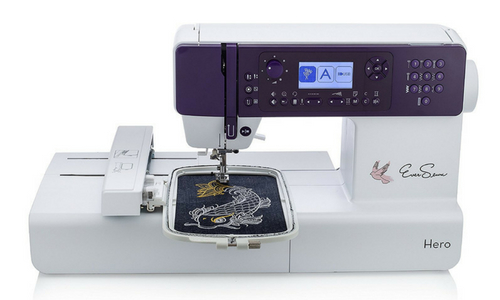
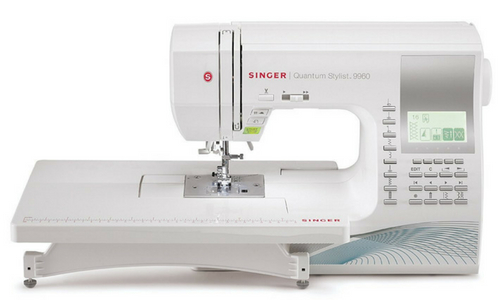
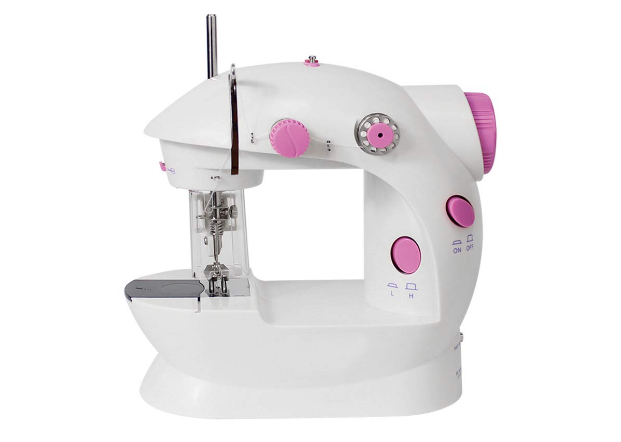
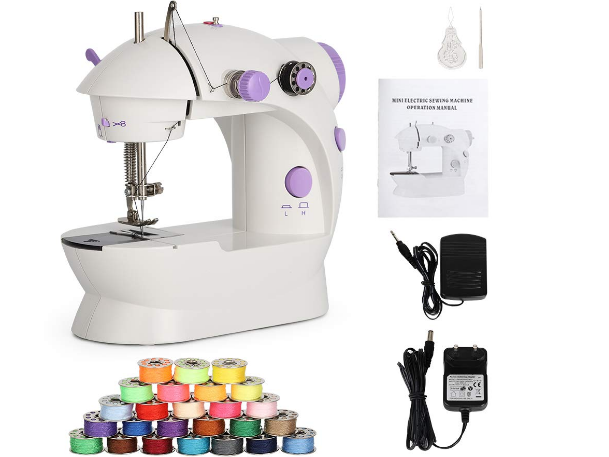
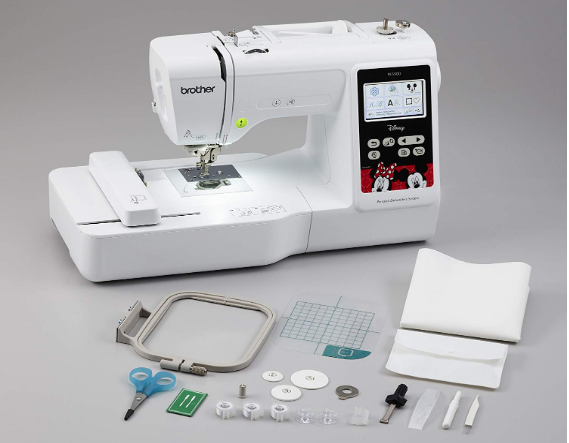
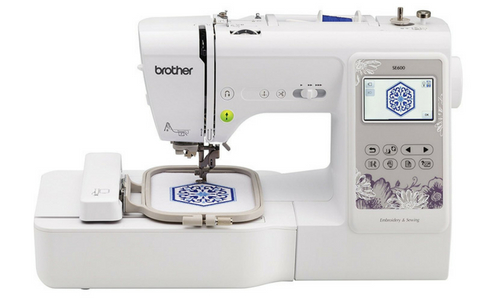
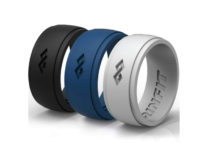

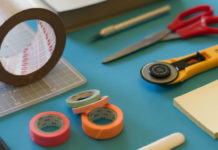
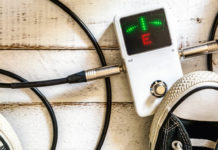
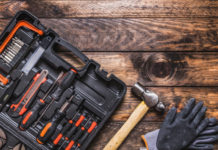
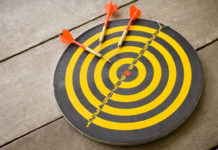





![Best Crochet Hooks for Beginners and Pros [2020 Update] best crochet books](https://www.awebtoknow.com/wp-content/uploads/2018/01/best-crochet-books-100x70.jpg)


